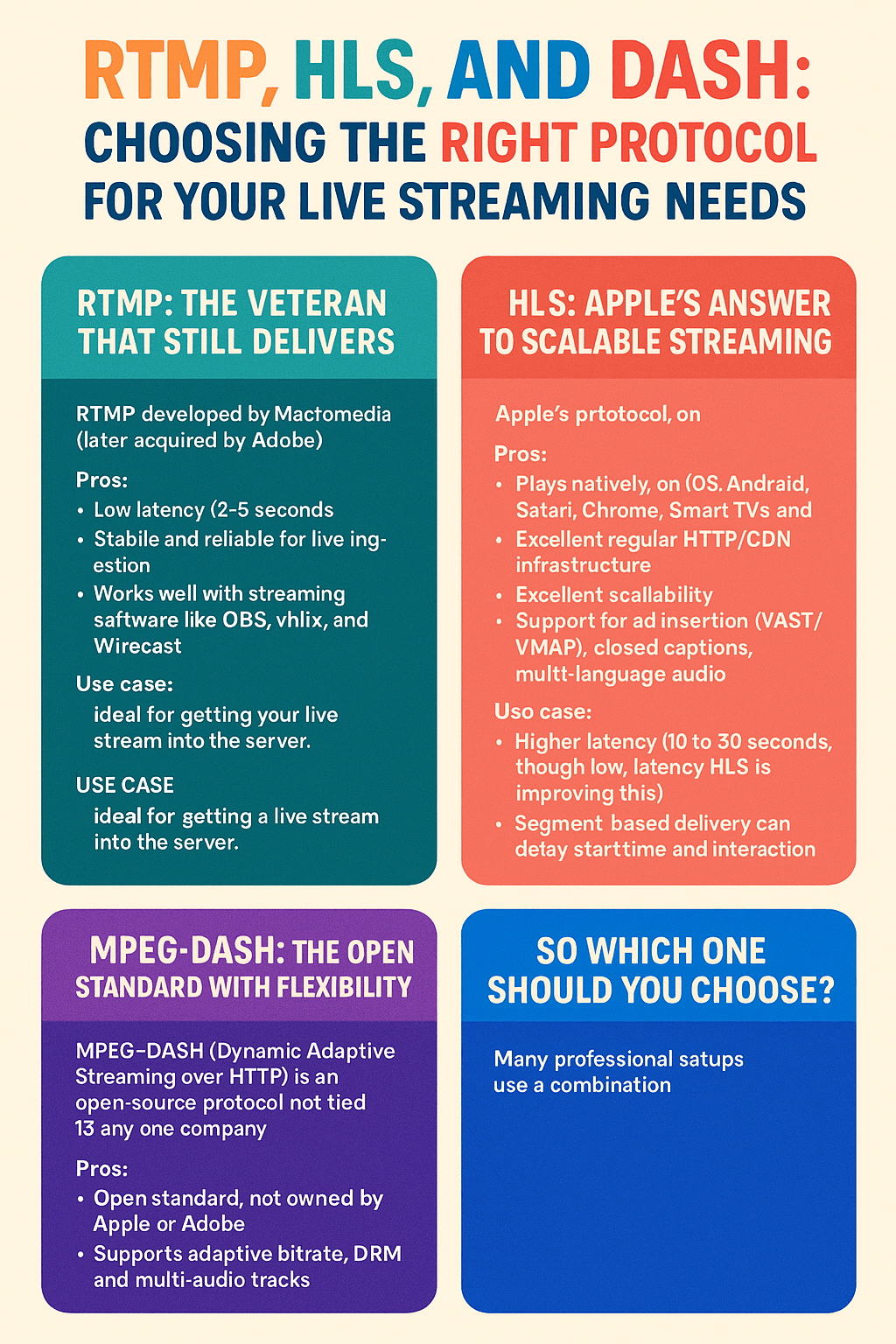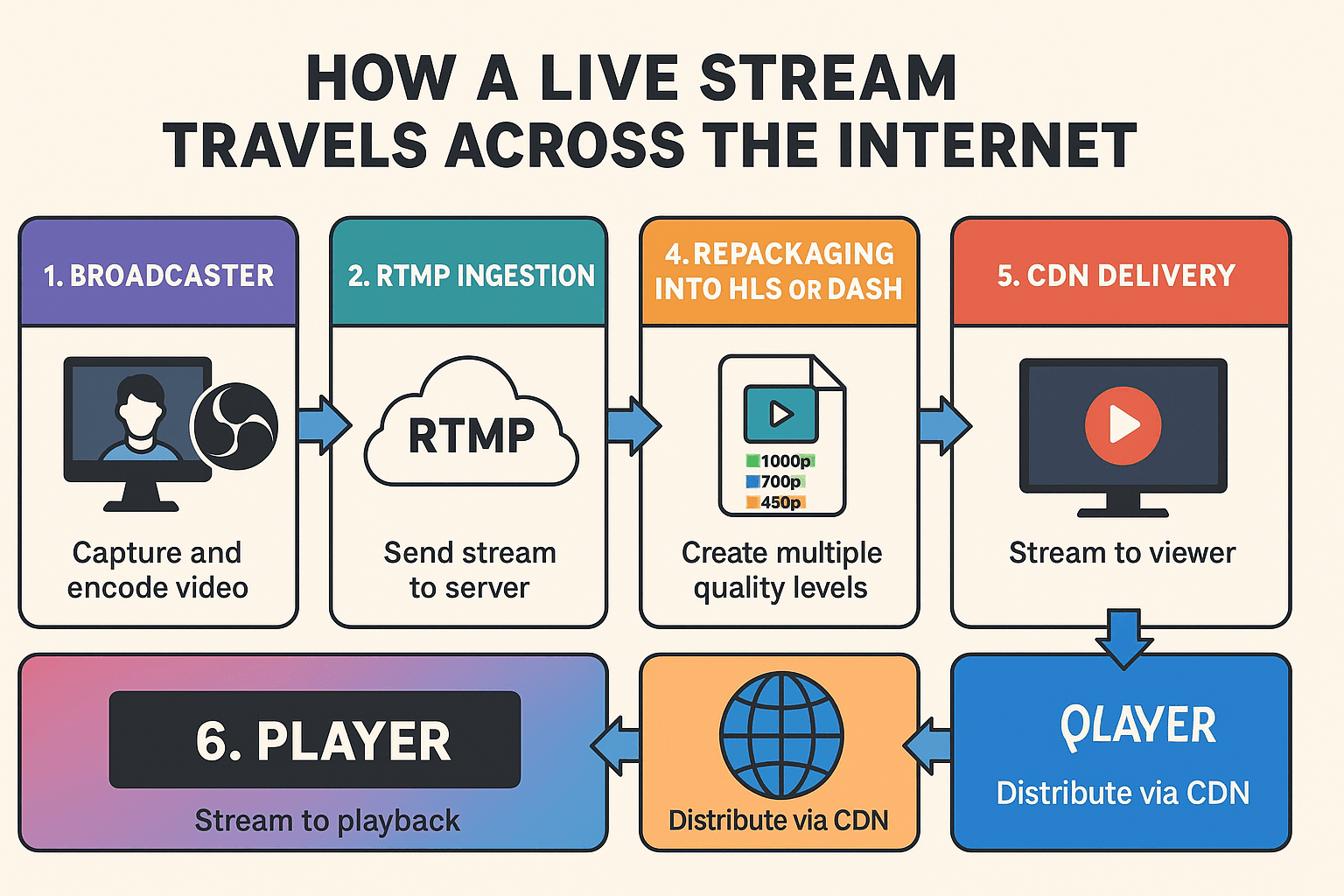For years, live streaming has meant compromise. You could have stability, but only with delay. You could get speed, but often lose reliability. And if you dared to think global, latency and buffering haunted every second of your broadcast. But today, things are changing. Quietly, almost under the radar, a breakthrough in real-time streaming is reshaping how we deliver video. At the heart of this shift is WebRTC.
WebRTC — Web Real-Time Communication — has been around for a while. It started as a browser project, designed to enable voice and video chat without plugins. But now, it’s stepping far beyond its original scope. Thanks to better infrastructure, smarter encoding, and hybrid deployment strategies, WebRTC is becoming a serious option for broadcasters, educators, sports platforms, and even small businesses who want zero-latency communication across the world.
And the change isn’t theoretical. It’s happening now.
Why RTMP still rules — and why that’s changing
Let’s be honest. Most of us still use RTMP because it works. It’s simple, well-supported, and still the backbone of services like Facebook Live, Twitch, and YouTube. Combined with Wowza or NGINX RTMP modules, it’s efficient and gives us full control. We know the flow: ingest, encode, distribute.
But the tradeoff is latency.
RTMP was never designed for sub-second delivery. Even the best setups usually give us 2 to 5 seconds delay. That may be fine for concerts or webinars, but it’s a problem for live auctions, sports with audience interaction, or online classes where students need to speak back in real time.
This is where WebRTC comes in.
What changed with WebRTC?
Until recently, WebRTC was hard to scale. You could do peer-to-peer, or maybe small-group chats, but as soon as you wanted 100 viewers or more, the architecture fell apart. Servers choked. Quality dropped. And integrating WebRTC into existing platforms wasn’t worth the effort.
But three things changed that:
- SFU technology (Selective Forwarding Units) matured. This means a WebRTC stream can be received by one server and intelligently forwarded to hundreds or thousands of viewers without wasting bandwidth or CPU.
- Hardware acceleration and better browser support made WebRTC smoother even on mobile devices.
- Hybrid infrastructure strategies — combining RTMP for ingest and WebRTC for playback — opened new possibilities. You can stream from OBS or mobile RTMP, and let the viewers watch instantly via WebRTC. That’s the breakthrough.
Real-world use: sports, education, support
At Hosting Marketers, we’ve started experimenting with WebRTC integration on some of our Wowza-powered RTMP servers. The results are impressive. In controlled environments, we’re seeing delay shrink to under 500 milliseconds. That’s practically instant.
For paddle tennis courts, for example, this changes everything. A player can stream from their phone or IP camera using RTMP. The video is received by our Wowza server, which then pushes it out in WebRTC to a fan base watching in real time — no buffering, no delay, just the court as it is, now.
In online teaching, this helps students feel like they’re in the room. Instead of waiting for the teacher’s lips to sync up, they hear and see everything in sync. Real-time questions become possible, and the whole session becomes more natural.
Customer support is another winner. Imagine a tech agent showing you how to fix your internet router live. No lag, no awkward pauses. Just help, in real time.
No plugins, no excuses
The best part of this shift is accessibility. WebRTC runs in the browser. No need to install VLC, download Flash (which thankfully is dead), or configure ports. Firefox, Chrome, Safari, Edge — they all support it natively. Even mobile browsers are catching up fast.
And for developers, the integration is getting easier. With APIs and frameworks now supporting WebRTC alongside traditional RTMP, you can embed low-latency players on your site with minimal effort.
What about monetization?
One of the first questions we get is, “Can I still run ads?” And the answer is yes.
Just like with RTMP, you can integrate VAST and VMAP ad tags into your WebRTC player using custom overlays or third-party services. While the player itself might need customization, the logic stays the same: pre-roll, mid-roll, post-roll — you’re still in control.
In fact, combining WebRTC with server-side ad insertion opens new paths for uninterrupted monetization. That means your viewers won’t even know when ads start or end. It feels seamless. And that leads to better retention and higher revenue.
The future is hybrid
We don’t believe WebRTC will kill RTMP. Not yet.
Instead, the real breakthrough is in combining them. Use RTMP to ingest — because that’s what your cameras and apps already understand — and WebRTC to deliver — because that’s what your audience demands.
At Hosting Marketers, we’re already testing this model across different packages. Clients who need the lowest latency for auctions, gaming, or support are switching. Others are using WebRTC for premium subscribers while keeping RTMP for the public stream.
Flexibility is key. And with Wowza at the core of our system, plus global edge servers, we’re ready for both.
What you need to get started
If you’re curious to try WebRTC, here’s what you’ll need:
- An RTMP encoder (like OBS or your phone)
- A streaming server that supports WebRTC output (Wowza, Ant Media, or Janus)
- A WebRTC-compatible player embedded in your site
- Optional: an ad system using VAST/VMAP, plus analytics
Don’t worry if that sounds complex — we can help set it up. In fact, we’re offering trial accounts to test our hybrid RTMP + WebRTC system. Contact us and we’ll guide you through it, including latency tests, ad setup, and integration into your website.
This is just the beginning
What we’re seeing is a fundamental shift in how the web handles live content. RTMP brought the first wave of affordable broadcasting. WebRTC is now unlocking the second wave: interactive, real-time, low-latency streaming that feels alive.
If you’re building a platform, running events, teaching classes, or just want to reach your audience without delay, the time to explore WebRTC is now.
The breakthrough isn’t coming. It’s already here.














